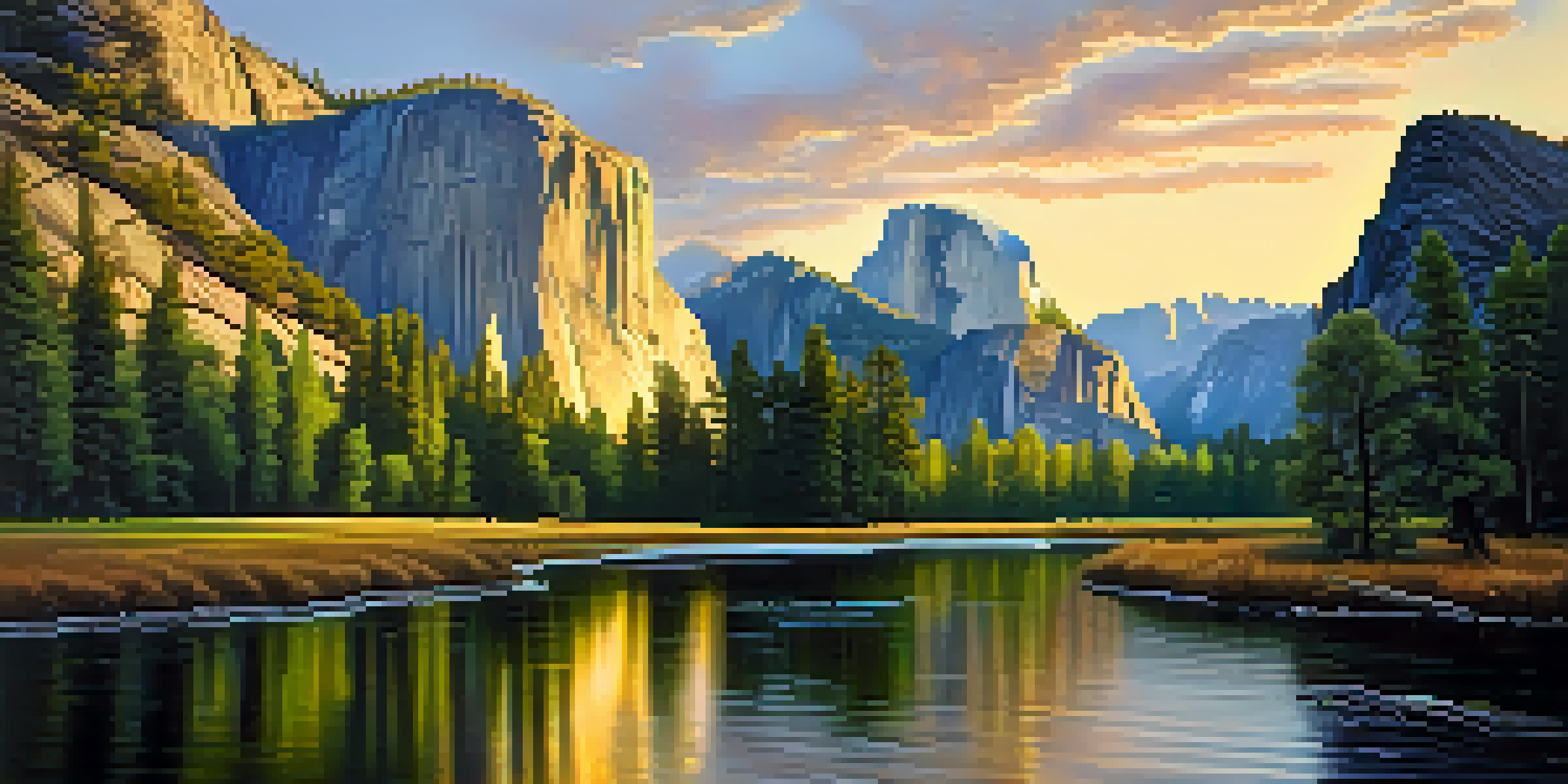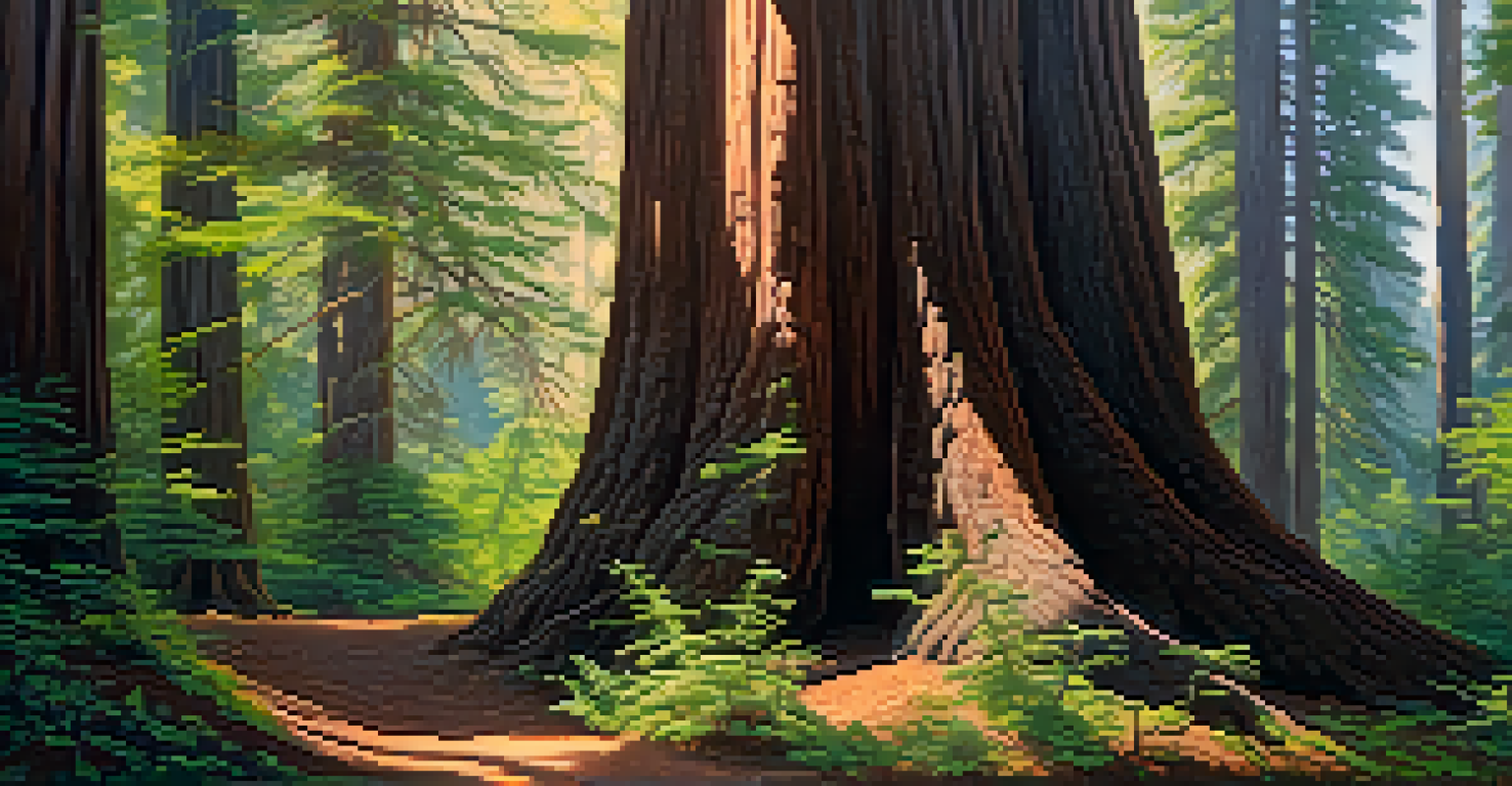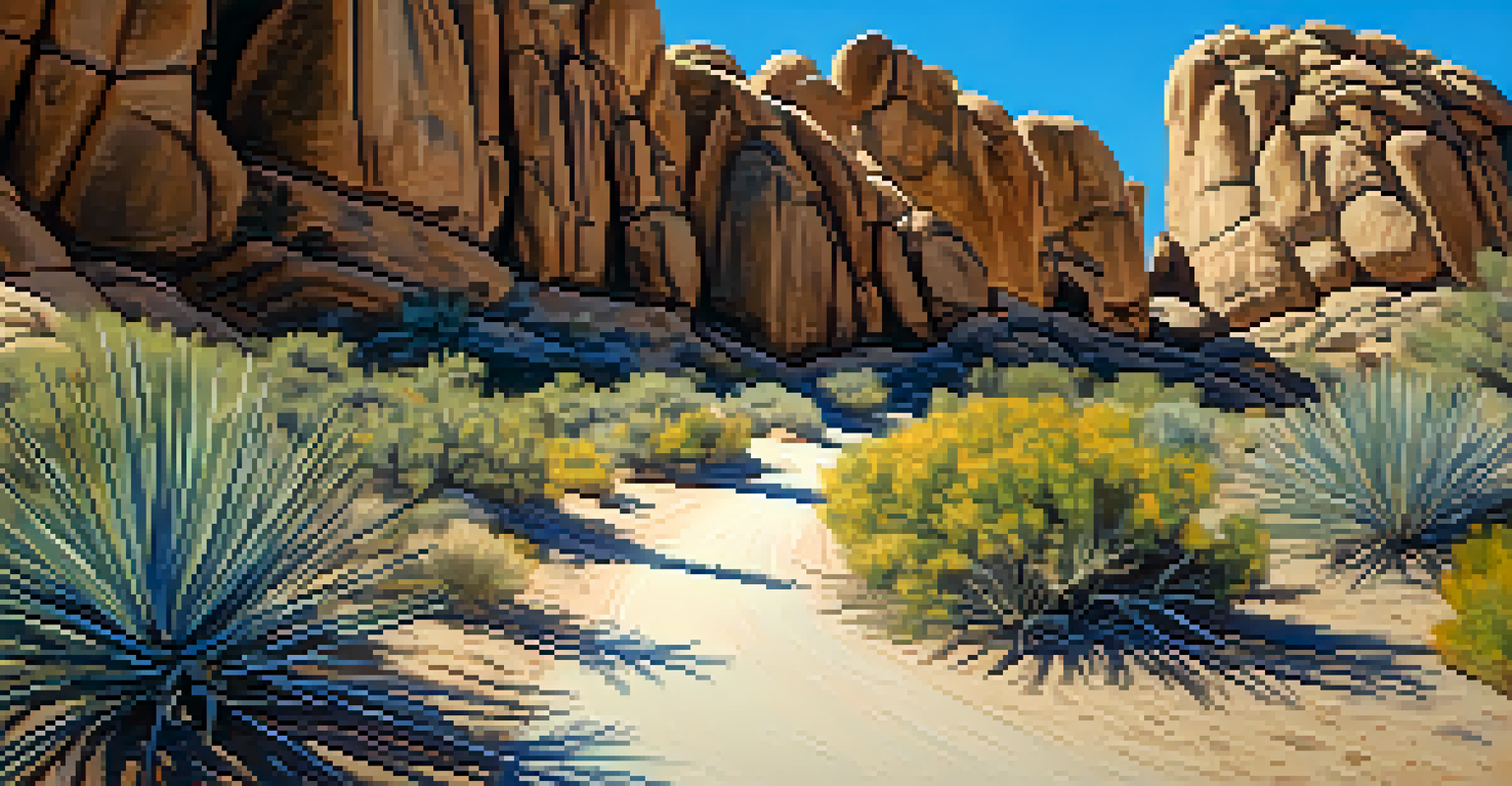Photography Tips for Capturing California's National Parks

Choose the Right Time of Day for Stunning Shots
The golden hour, just after sunrise and before sunset, is a photographer's dream. The soft, warm light enhances colors and creates beautiful shadows, making landscapes come alive. Visiting California's national parks during these times can transform an ordinary scene into an extraordinary one.
Photography is the story I fail to put into words.
For example, imagine standing in Yosemite Valley as the sun rises, casting a golden hue on El Capitan and Half Dome. This iconic view is not just breathtaking; it’s also the perfect moment to capture the essence of the park. Timing is everything, so plan your excursions around these magical hours.
However, don’t overlook other times of the day. Midday light can also be used creatively. Look for shaded areas or focus on details like flowers or textures in the landscape, which can add depth to your portfolio.
Master the Art of Composition for Impactful Images
Composition is the backbone of any great photograph. Familiarize yourself with techniques like the rule of thirds, where you divide your frame into a grid and place your subject along these lines. This simple adjustment can create a more balanced and engaging image.

An example of this in practice is capturing a sweeping vista of the Redwood National Park. By positioning a towering tree off-center, you not only highlight the majesty of the giants but also the lush forest around them. Such choices invite the viewer’s eye to explore the entire frame.
Capture Stunning Light at Dawn/Dusk
The golden hour enhances colors and creates captivating shadows, making it the ideal time for photography.
Remember, don’t be afraid to break the rules occasionally! Sometimes, a unique perspective or an unexpected angle can yield the most striking results, so experiment and find what works for you.
Utilize Natural Elements to Enhance Your Photos
In California's national parks, the natural elements are your best friends. Trees, rocks, water, and skies can all play a crucial role in your composition. Look for ways to frame your subject with these elements to add layers and context to your shots.
You don’t take a photograph, you make it.
For instance, if you're photographing the stunning waterfalls in Kings Canyon, try to include some foreground rocks or lush vegetation. This creates depth and invites the viewer into the scene, making them feel like they are standing right there with you.
Additionally, don't shy away from using reflections in lakes or puddles. They can double the beauty of your image, especially during sunrise or sunset when colors are most vibrant.
Experiment with Different Perspectives and Angles
Often, the best shots come from trying something different. Don’t just shoot from eye level; kneel down, climb up, or find a unique vantage point. Changing your perspective can dramatically alter the mood and message of your photograph.
For example, when photographing the dramatic cliffs of Point Reyes, try capturing them from below, looking up, or from a higher ridge. This can create a sense of grandeur and showcase the vastness of the landscape in a way that a standard shot simply can’t.
Master Composition for Impact
Utilizing techniques like the rule of thirds can create more balanced and engaging images.
Additionally, consider using a wide-angle lens for expansive scenes or a zoom lens to capture wildlife from a distance, bringing a creative flair to your photography.
Focus on Wildlife Photography Techniques
California’s national parks are teeming with wildlife, and capturing them can be an exhilarating challenge. Patience is key; often, the best moments occur when you least expect them. Bring your camera and be ready to shoot at a moment's notice.
A tip for wildlife photography is to use a longer lens to avoid disturbing animals. This way, you can capture their natural behavior without intruding. For example, if you’re photographing a bear in Sequoia National Park, a telephoto lens allows you to keep a respectful distance while getting those stunning close-up shots.
Moreover, learn about the animal's habits and timings. Being in the right place at the right time can significantly increase your chances of capturing fantastic wildlife images.
Incorporate Leading Lines for Visual Guidance
Leading lines are a powerful compositional tool that can draw the viewer’s eye through your photograph. Look for natural lines in the landscape, such as roads, rivers, or trails, to guide the viewer towards your subject and create a sense of depth.
For instance, when capturing a winding path in Joshua Tree National Park, position yourself at an angle where the path leads toward a striking rock formation. This not only creates a visual journey but also adds context to your image.
Enhance Photos with Natural Elements
Incorporating trees, rocks, and reflections can add depth and context to your landscape photography.
Experiment with different angles to find the most dynamic way to incorporate leading lines, enhancing the storytelling aspect of your photographs.
Post-Processing Tips for Polishing Your Images
After capturing your images, a little post-processing can go a long way. Editing tools can enhance colors, contrast, and sharpness, helping your photos reflect the beauty you experienced in the parks. Popular software options include Adobe Lightroom and Photoshop, which offer user-friendly features for all skill levels.
For example, adjusting the saturation can make the vibrant hues of a sunset pop, while slight cropping can help you focus the viewer’s attention on your subject. Don’t be afraid to experiment with different edits until you find a style that suits your vision.

However, remember to keep it natural. Over-editing can detract from the beauty of your original image, so aim for enhancements that remain true to the experience you want to share.